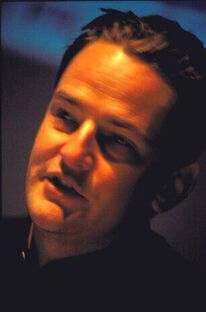This talk will reflect on some of the key aspects of the recent book, Investigative Aesthetics. Conflicts And Commons In The Politics Of Truth by Matthew Fuller and Eyal Weizman (Verso, August 2021). The book proposes a twofold approach to aesthetics - firstly around sensing and contemporary ecological understandings of sensing and secondly around sense-making: both in terms of aesthetic practices that invent senses and sensualities and in relating aesthetics to forms of reason, the making of arguments and the formation of facts. The techniques of critique can be used to hone and construct the formation of facts as well as to fracture them.
The investigative in art or spatial practices often reconstructs incidents around clusters of specific details to discern the world of which they are part. Investigations often start from a site or a specific point: a controversy, a local debate, an accident, a detail. From this point of individuation, an investigation follows different threads that lead outwards along complex paths of causality. Disentangling these threads needs different forms of knowledge, experience and expertise. These may for instance be computational and procedural or spatial and analytical, but also situated and experiential.
Investigative aesthetics also draws on Open Source Intelligence. It is, in part, a process of collectively assembling accounts of incidents from media flotsam. It involves tuning into and interpreting weak signals and noticing unintentional evidence registered in visual, audio or data files or in the material composition of our environment, itself understood as a mediating condition. It also refers to the use of aesthetic sensibilities in assembling cases, in editing material into effective film and videos or installations. In these constructions, each found element is not a piece of evidence in itself, but rather an entry point to find connections with others, a part in a heterogeneous assemblage that allows for navigation across and the weaving together of disparate elements.
Matthew Fuller is a cultural theorist who works on art, science, politics and aesthetics. His books include How to Sleep: The Art, Biology and Culture of Unconsciousness (Bloomsbury 2018), How to Be a Geek: Essays on the Culture of Software (Polity 2017), with Olga Goriunova, Bleak Joys: Aesthetics of Ecology and Impossibility (Minnesota 2019) and with Eyal Weizman, Investigative Aesthetics: Conflicts and Commons in the Politics of Truth (Verso 2021). He is Professor of Cultural Studies at Goldsmiths, University of London.
